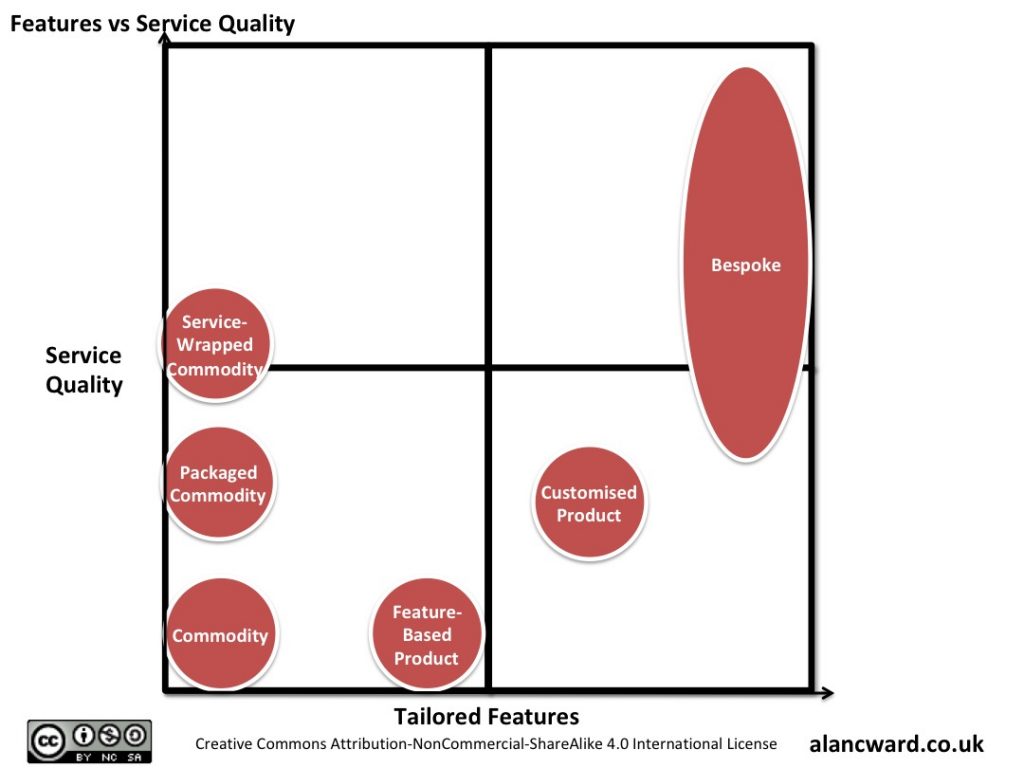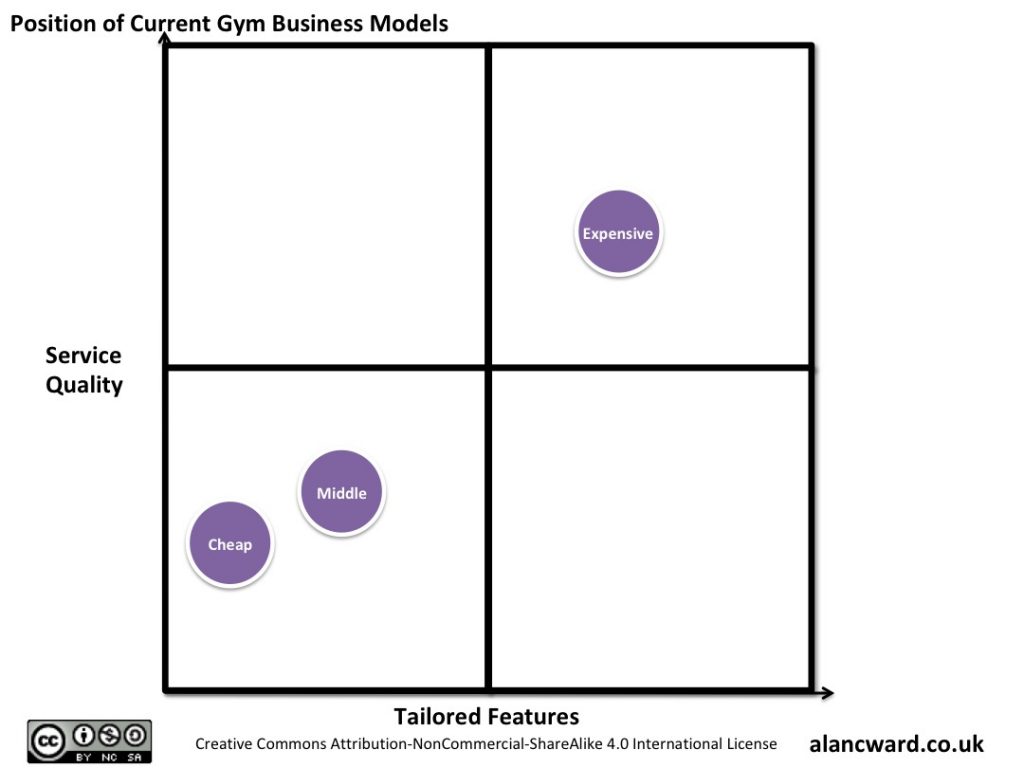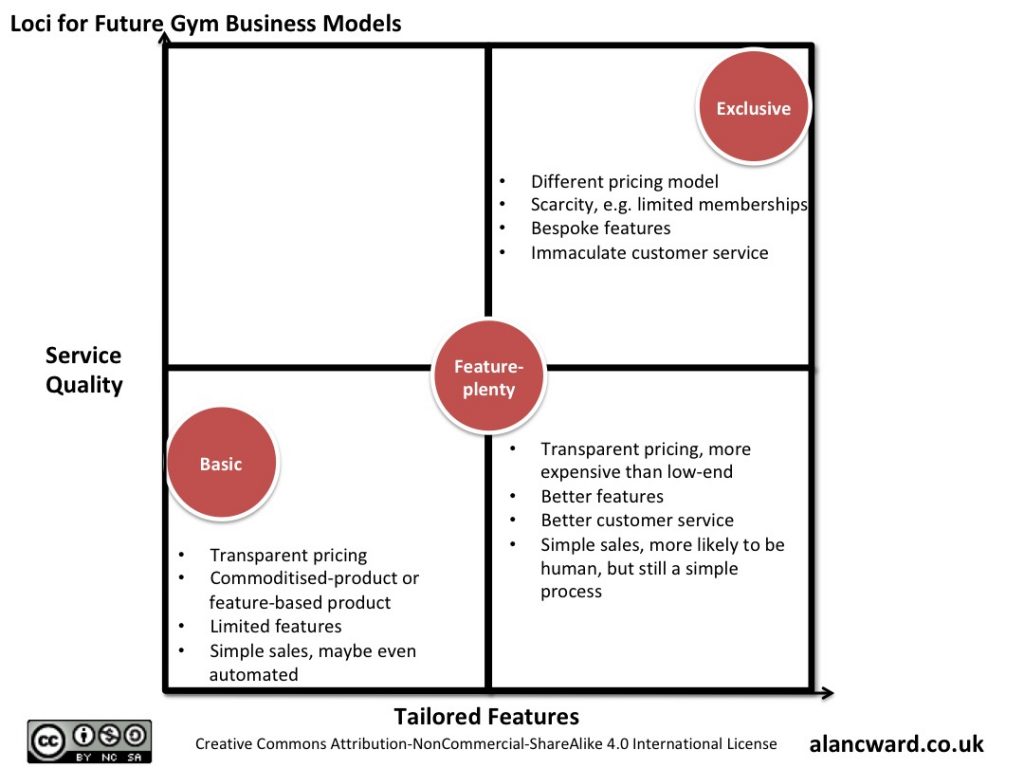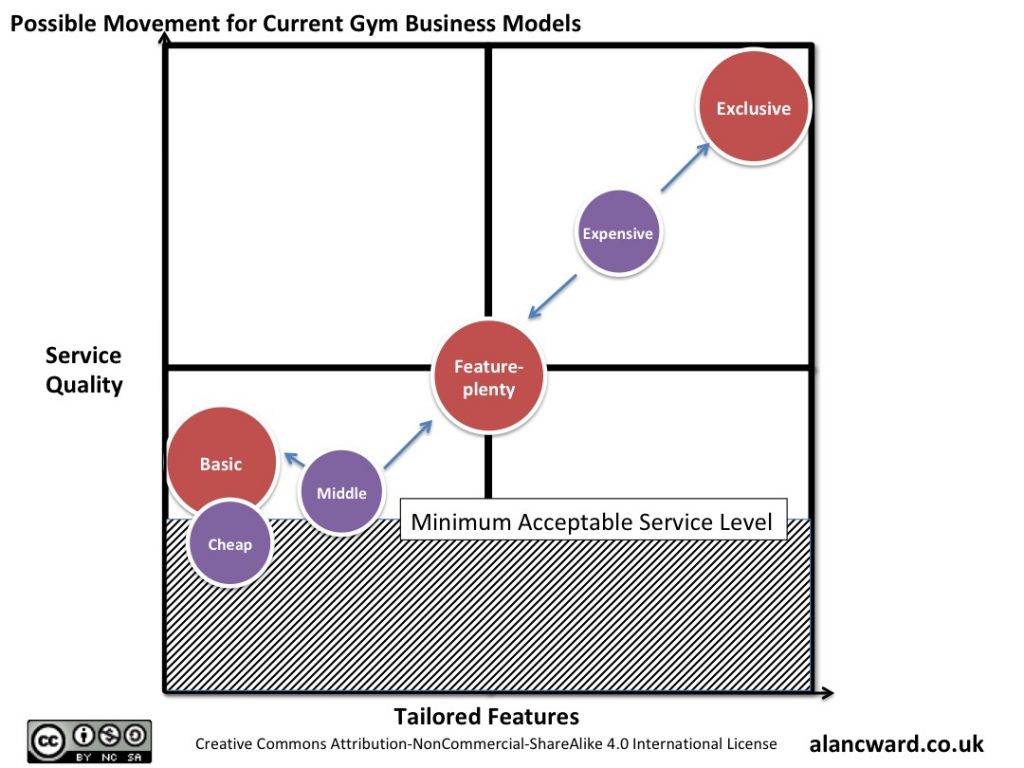New Year, New Gym, New Business Model

The business of gyms is an odd one. It’s full of business principles from the 1970s with a thin veneer of customer service from the 1990s.
What’s the modern approach?
Let’s look at the typical issues with modern gym memberships. If you search on a few review sites or social media, you’ll commonly see a number of prospects who turned their back on transitioning to customers mixed with disgruntled customers. From a cursory glance, there are significantly more unhappy customers than happy customers and the gap between is wider than in any other industry that I can think of.
So what’s the reason behind this? I think it could be due to gym managers and owners applying the wrong business model.
The Continuum
From a very simplistic viewpoint, we can fit products onto a continuum from commodities, feature-based through to bespoke.
A commodity is the same wherever you buy it from. It’s not different if you buy from a or b, the same experience applies. In the end, you’ll own the same product.
Moving from commodities, we encounter feature-based products. Here the differentiator is the set of features on offer. This is where we start to introduce concepts of value in relation to the features provided. Some features cost more than others, but in the end we’re buying features, so we’ll try to choose the features we want, or at least those that we think we want. On the other side of the negotiation, we see salespeople selling features or solutions to problems or issues.
Further up the continuum and we move to customisations, where we can take a feature-based product and have it customised to our needs. The cost is a combination of the product, the features, the customisation and the perceived value of the brand.
At the far end of the continuum from where we started are the bespoke products. These are developed from scratch to meet our requirements.
Service Quality
We can also introduce the concept of service quality. This could range from no service (e.g. simple automation with no choices), through a service wrapper to complete bespoke services.
Depending on the offer, we may have to take into account the total cost of the purchase (e.g. including the transaction fees, shipping, etc). So the differentiator becomes how cheaply, quickly we can receive the product and how much we’re prepared to pay for the total combination.
Moving further along, we encounter products that are becoming commoditised, i.e. the same product, but the differentiator could be the service wrapped around that product. This is where we start to see our perception of the brand in how it will look after us if something goes wrong with the purchase.
Customised products, by necessity of the interaction involved, include a higher level of service quality than the pure commodity products.
Where do gyms fit in?
Depending on the gym chain, they may have a sales and service model for the wrong type of product being offered.
Gyms as a whole tend to be following a sector-agnostic trend of delivering cheap as cheaply and simply as possible or selling quality as expensive. But there is confusion in the industry. There are a number of chains who don’t seem to have decided on their position. We see that by how they respond to complaints, by how well they maintain equipment, by how smooth they make the enrolment process, etc. In other words, they’re branding themselves as quality, but not following up on the offer. Customers and prospects are beginning to notice this. More importantly, with the advent of more pervasive social media and review sites, their opinions are more public and wider-reaching than at any time before. This will impact the pricing model, since it will become more difficult for a gym chain to obfuscate pricing per customer.
At the higher end of the chain,we see that expensive gyms hide the pricing structure which is indicative of bespoke services and possibly higher-end customisation. But neither of those attributes ever apply. At most, a gym is feature-based. So we find ourselves in an odd mix of worlds, where:
- the monthly cost is expensive or very expensive (depending on how good your haggling skills were) considering the feature-based angle,
- the sales approach is based on selling bespoke products
- prices are hidden
- the salespeople are usually too junior/low paid if a gym for selling bespoke services (but probably appropriately paid when we consider it’s a feature-based or commoditised-product sale)
- customer service, whether as resolution of complaints or, more importantly, how customers are treated in terms of contracts, doesn’t reflect the levels we’d expect of bespoke dealers
If we relate this the world of cars, we could consider the lower-end of the market as the Škoda – perfectly good cars, made for a cheaper segment with fewer features than in more expensive cars. The higher end would be comparable to the more expensive Audis or Lexus. That also leaves room at the extremes, e.g. for Bentley and Rolls Royce at the top end. For each of those car companies, there’s a different sales method. We’d expect to see the salespeople on different packages. Similarly prices are more transparent at the lower end of the market.
Let’s put this back together.
If we take a lesson from car brands, combine with the industry-agnostic trend, we end up with a split:
Basic
- Transparent pricing
- either commoditised-product or feature-based product
- implying limited features (think of the basic features from a Kano model)
- simple sales, maybe even automated
Feature-plenty
- Transparent pricing, more expensive than low-end
- simple sales, more likely to be human, but still a simple process
- better features
- better customer service
Exclusive
- Different pricing model
- Scarcity, e.g. limited memberships
- bespoke features
- immaculate customer service
Looking at it from this angle, we see that there are gyms which attempt to avoid the low-end of the market, but are not at the exclusive end. But they don’t fit comfortably in the Feature-plenty. Bear in mind that Audis, Lexus and Škodas are still bought on a combination of features and brand. They’re still cars that you can order online. If you can’t find one local, you can simply find one somewhere. We can’t say that to the same extent for Bentley or Rolls Royce.
In most industries, we may be able to predict congruence with the trend, however the gym industry seems based on 1970s principles and exhibits a complete inertia to listening to customers, let alone delivering what customers want.
In the UK, we’re seeing more budget-brand gyms following the Basic model above. Prices are listed online and with fewer surprises or secret, it permits an automated sales process. Even so, they’re still applying joining fees rather than increasing the monthly fee by a small amount. Although that may be because the memberships gyms are already priced at triggering amounts, e.g. £14.99 + a £25 joining fee sounds better than £17 per month.
We also see very exclusive gyms with limited memberships, exorbitant monthly fees and joining fees, but catering to those that can afford it and those that want to be seen in the places to be.
Unfortunately the middle ground is badly managed. If they remain as they are, with the same customer-unfriendly practices, they will lose customers to the better basic gyms. This will become more prevalent as the basic gyms continue to reinvent what a gym means, by adding better customer service and as the basic gyms increase their offer by heading towards the feature-plenty model described above. Some of the customers will move to the truly exclusive gyms.
To counter this, those middle ground gyms will have to change. They can choose to be Basic, Feature-Plenty or Exclusive. Whichever is chosen, all 3 options require change.
At first glance, Feature-plenty appears to be easiest since they’re already charging more than Basic gyms, providing more features for that charge, but it would require a wholesale change in customer experience, from the sales process, on boarding, through to day-to-day experience, resolution of issues and membership retirement. That may look like a lower profit but there are enough case studies proving that focussing on the customer experience results in higher profit.
The change to Exclusive may be better done with a rebrand. Keeping the same brand will not carry the same perceived value regardless of what is done to the chain, at least not in sufficient time frame to prove return-on-investment.
The change to Basic may not be feasible for all the middle ground gyms due to the size of gym involved. The Basic gyms are typically smaller than the middle ground gyms. That’s possibly because they don’t rely on numerous features and so don’t need as much space to accommodate those extra features. Or it could be a attribute of the building costs, i.e. simpler to find a smaller space than a larger space suitable for a gym.







Recent Comments